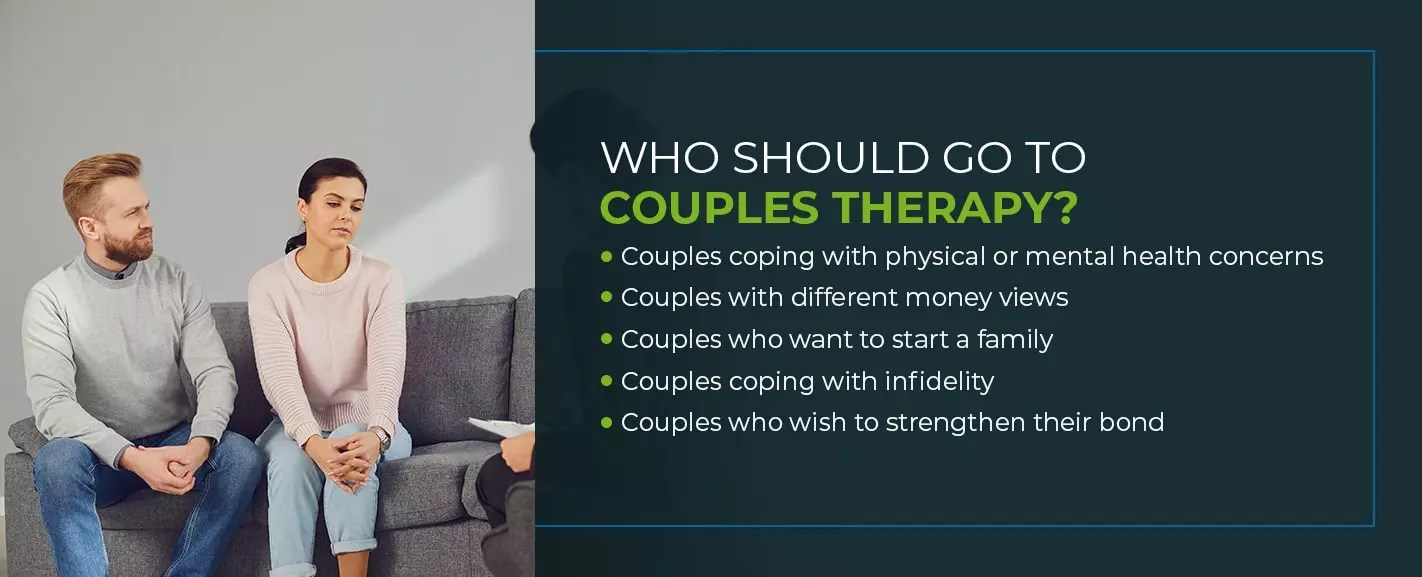Little Known Questions About Aim Point Counseling.
Little Known Questions About Aim Point Counseling.
Blog Article
Not known Facts About Aim Point Counseling
Table of ContentsAim Point Counseling Things To Know Before You Get This9 Simple Techniques For Aim Point CounselingAim Point Counseling for BeginnersSome Known Questions About Aim Point Counseling.Getting My Aim Point Counseling To WorkOur Aim Point Counseling Statements
The longitudinal design involves a pre-treatment survey and two follow-up studies at 3- and 12-months post-intervention. The study is established in eight Relationships Australia Victoria centres, across urbane, external suburban areas, and regional/rural sites. Relationships Australia, a non-government organisation, is the largest service provider of pair therapy and relationship solutions in Australia.
These high prices of partnership failure have actually been regularly connected with negative wellness effects for both grownups and youngsters adhering to divorce/separation.
Some Ideas on Aim Point Counseling You Should Know
The impacts of separation and separation can be destructive, research study shows that high connection dissonance in intact pairs is also most likely to have negative results.
Variables that influence the results of these solutions need comprehensive investigation. Research to date has actually determined both pair and individual elements that might add to connection discord. These include connection satisfaction and commitment at the pair degree, and depression at the private degree. Nonetheless, robust research to examine relationship-enhancing treatments in the community are scarce.
Little Known Facts About Aim Point Counseling.
Partnership contentment has actually been the most common outcome variable identified in greater than 200 analyses of pair counselling [11,12] Studies have discovered significant enhancements in relationship complete satisfaction from pre- to post-treatment [13,14] and over the course of one to 2 years adhering to therapy [15] In these studies, relationship satisfaction was most regularly assessed making use of the Dyadic Modification Scale (DAS) [16] While many researches suggest renovations in partnership fulfillment adhering to couple therapy, they are restricted by the samples and procedures made use of, largely temporary follow-up time frameworks, and evaluations that do not account for the dyadic nature of couple information., is another frequently examined partnership outcome.
To summarise, research study shows that couple-specific variables as well as private variables might predict the results of pair coaching and partnership services. The causal direction of these relationships, however, is less clear. These observations are essential, because, to validate and direct the application of partnership solutions such as pair coaching, empirical proof has to discover both the end results of connection solutions and the elements that predict effective therapy.
For that reason, there is an expanding agreement that efficiency studies must be matched by efficiency research to best notify professional method [ 29] The minimal effectiveness study that exists to date recommends that couple therapy can enhance outcomes such as partnership contentment [33,43], communication abilities and basic health [44], at the very least in some European countries.

We presently know little about the accounts of pairs who seek out relationship education and learning contrasted with those who look for connection counselling, or the end results of these programs. Unscientific evidence recommends that there may be considerable distress among at the very least some pairs seeking partnership education and learning.
See This Report about Aim Point Counseling
Responses entails participants finishing questionnaires regarding their relationship (e.g. procedures of interpersonal issues), and getting information on what their scores indicate. Cognitive-behavioural strategies promote changing cognitions to promote positive relationships. These might consist of promoting sensible attributions/expectations around negative partner practices [46] Finally, in skills training, pairs attend lectures or discussions on partnership skills, and practice these during facilitator-led activities [ 45]
These meta-analyses highlight limitations in the present literary works on relationship education. This sample profile may not represent clients who normally present for relationship education.
Some Ideas on Aim Point Counseling You Need To Know

Extremely little study has actually checked out the relative benefits of couple therapy and partnership education and learning programs. As clients are most likely to self-select right into these solution types, it is not clear whether characteristic relationship distress accounts existing to every service type, or indeed whether there is a communication in between providing account, solution type and result.
(https://us.enrollbusiness.com/BusinessProfile/7107289/Aim%20Point%20Counseling)
Thus, we have actually included a 12-month follow-up to determine longer-term patterns and effects. The research study uses a variety of standardized end result steps considering that some prior examinations have been criticised for their absence of standardised analysis [50] The usage of statistical evaluations that think self-reliance of information, such as t-tests, or ANOVAs, has been common in previous researches [ 44,49]
For that reason, we recommend to use multi-level analytical modelling treatments that regulate for the inter-dependence of couple information to examine any kind of treatment impacts. The specific objectives of the ECC research study are to: 1. Map accounts of customers seeking neighborhood agency-based pair therapy vs. partnership enhancement programs in terms of socio-demographic and connection signs (such as partnership satisfaction, connection commitment, social issues, and factors for attending), as well as health (such as clinical depression, basic wellbeing) and health solution usage (eg.
2. Figure out whether pair therapy and relationship education and learning solutions boost 3- and twelve-month end results for partnership satisfaction, commitment, and clinical depression, utilizing analytical analyses suitable to combine data. 3. Identify the family member contributions of client elements (private and couple) and therapy/education elements to results at 3- and 12-months, and to sustainability of outcomes gradually.
How Aim Point Counseling can Save You Time, Stress, and Money.
Multi-level modelling to figure websites out pre-post distinctions, regulating for dyadic (pair) degree. To add to the literary works analyzing the efficiency of community-based pair therapy. The results will certainly assist clinical decision-making in community-based partnership solution settings, and specialist training. 3. To identify the family member payments of client/couple and therapy variables to outcomes at 3- and 12-months, and to sustainability of end results over time.
Report this page